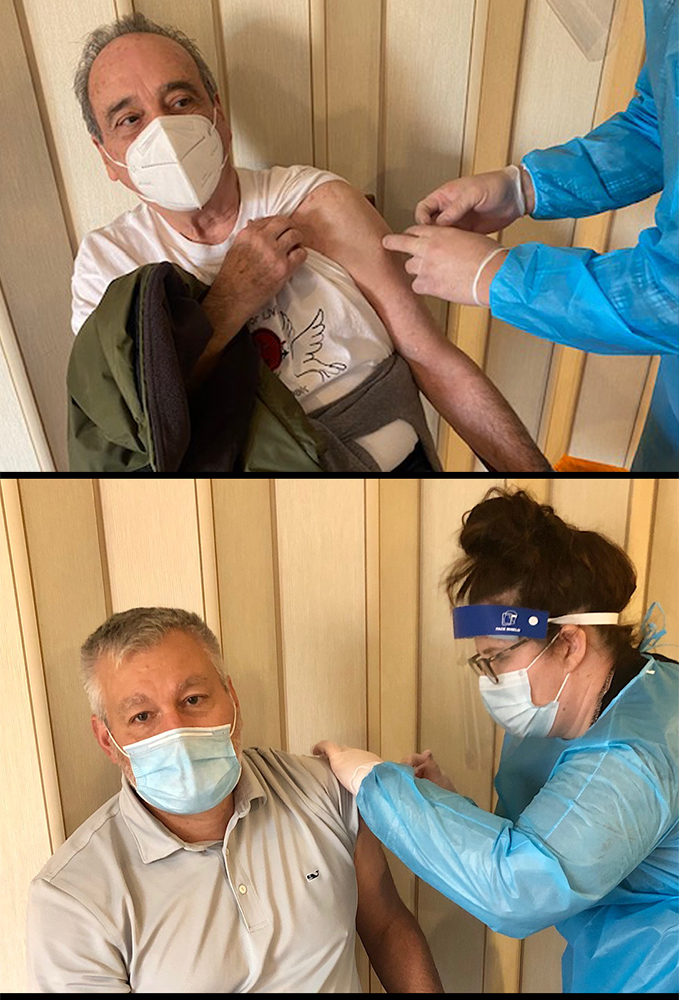
Work for a new COVID-19 vaccine art campaign designed to encourage vaccinations and inspire hope is already underway in Princeton.
The campaign is being spearheaded by Princeton Health Department Vulnerable Population Outreach Coordinator (VPOC) Gwendolyn Krol. Krol drew inspiration for the campaign from officials in Charlotte, North Carolina’s Mecklenberg County, which had artists create pieces of art through a competition that would display taglines and messages in different languages.
The artwork is being used as a different way to promote not only the importance of COVID-19 vaccinations, but encourage people to register and help against vaccine hesitancy. Krol is looking to replicate something similar and specific to Princeton.
“We have seen that there is a lot of vaccine hesitancy. We see this more in vulnerable populations,” she said. “The hesitancy is warranted and their historical awareness of mistrust of abuse and medical racism that has existed in using medical care and kind of experimenting on those at-risk and more vulnerable. There is a lot of misinformation surrounding COVID-19 vaccines and conspiracy theories regarding it.”
Princeton’s campaign with the created artwork, messages and taglines would promote COVID-19 vaccinations and also preventative measures such as wearing a mask and social distancing.
“I coordinated and collaborated with the Arts Council of Princeton, so that they can recruit local artists and residents to something similar that the city of Charlotte did,” Krol said. “So through this art campaign we want to kind of dispel misinformation about the COVID-19 vaccine and kind of create a sense of trust in the vaccine and with the healthcare providers who are administering the vaccine.”
The Arts Council of Princeton would be a facilitator of the organization’s artists network.
“We jumped at the opportunity. It is one of our goals is to always offer artists opportunities and this is an opportunity for artists to make art,” said Adam Welch, executive director of the Arts Council. “We are partnering in media partnership in a sort of sense, sharing our social networks, and emailing our artists about the opportunity.”
He added that art is a great way to catch people’s attention.
“Essentially this is like a graphic design sort of a thing. To help deliver a message that is a little more aesthetic, so that the information is shared through a pictorial way versus a verbal or literary way, is just another way to get the message out there,” Welch said. “Turning a public service message in an aesthetical delivery perhaps can help de-mystify what they are asking and help make it seem less scary to some.”
The campaign’s goal is to reach more people and educate residents with something more beautiful. That artists are being compensated for their work.
“Showing residents what getting the vaccine and registering for the vaccine might mean – inviting grandma to a Fourth of July barbecue this summer – and steps towards normalcy,” Krol said. “By having the messages in different languages to reach different groups of people they might be inspired to register for the vaccine and when an appointment becomes available for them they might accept that appointment and go.”
Krol had been accepting submissions from artists to draft their sketches by March 19. From there, they notified artists after receiving all of the submissions so they had time to submit their final pieces.
“So hopefully by the beginning of April we will have final submissions, but it is definitely more of a flexible timeline depending on how many submissions we get,” she said.
After that, Krol would then like to repurpose the artwork and make them into fliers, mass print them and send to community organizations to give to their populations and residents through their meal bags or putting them in their building, posting in local businesses and pharmacies and spreading the messages around town.
“Additionally and potentially a small art exhibition occurring outdoors, that is a new idea. I am going to have to think about that more; also potentially getting a few in a newspaper and displaying them online,” she said. “We are looking at different formats and different mediums of art. Some of the ideas we have right now are more like graphic design and we’ll see if we get more that are like paintings or drawings.”



